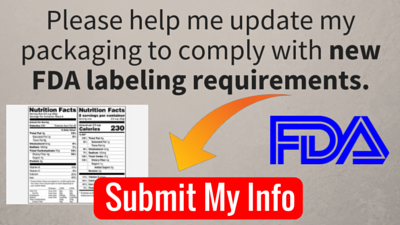A guess?! REALLY? Yes. Traditionally, "sell-by" and "use-by" dates have simply symbolized manufacturers' messages to the grocery store stating when the product would look the best and when they think the consumer will most likely enjoy the product. This subjective standard used to judge dates gets interpreted by consumers in a very objective way — as a food safety claim.
If you are baffled by this realization, sit tight. There is good news on the horizon! The Department of Agriculture and a coalition of environmental groups are tired of the nonsense on these confusing food packaging labels and are calling for order. Not only is the confusion creating massive food waste, but the result is impacting greenhouse gas emissions. In an effort to bring an end to the disorganization that plagues the industry's product date labels, the Food Marketing Institute and the Grocery Manufacturers Assn., have adopted standardized regulations. Instead of choosing one of about a dozen different product date labels, manufacturers will be choosing one of two options: "Use By" and "Best if Used By."

This may seem like a small change, but it is a pivotal one to help get the industry and consumers on the same page. The term "use by" will represent food safety on perishable food items. The term "best if used by" will speak more to the quality and taste of the product, rather than if the product is actually still OK to eat. This all sounds like good news from a consumer standpoint, but there's a catch: When the new date labeling goes into effect in July 2018, adhering to the standards will be voluntary. However, the Food Marketing Institute and the Grocery Manufacturers Assn. have high hopes that the vast majority of retailers will gladly adopt the new, streamlined standards for food packaging. Some manufacturers, including Walmart, have already given their stamp of approval.
Product date labels are not the only industry standards changing in 2018. All nutrition labels and packaging must be updated on all applicable CPG products by July 26, 2018. The updated Nutrition Facts labels will make it easier for consumers to better understand what they are ingesting and make more informed food choices, according to the FDA.
"According to NRDC, Americans throw away $218 billion worth of food each year. The anti-food-waste coalition ReFED estimates that 398,000 tons, or $1.8 billion, could be saved through standardized date labels." Food packaging labels aren't the only way to eliminate food waste, however. Using protective flexible containers for packaging food is a proven way to prevent food from spoiling or coming in contact with harmful external contaminants. Flexible food packaging, like stand up pouches, are created using highly protective barrier layers that are laminated together, creating a seal on all sides of the packaging. They can also be produced with a reclosable zip lock, which allows consumers to return to the product multiple times without it going stale, as well as take it on the go without worrying about food leaking or spilling due to puncture, rips, shatters, or disintegration.
Custom printed packaging allows brands to choose a high-quality, protective pouch that best highlights their updated food labels using crisp, vibrant inks that stand out on the package. The marriage of a vibrant container that best shows off federally regulated food labels, paired with the structural materials that prevent food waste, will help CPG brands better advocate for consumers in years to come.
According to the CDC, more than one third (36.5 percent) of adults, are obese. As an environmentally friendly, health-conscience, and socially responsible company, we sincerely hope that the cooperation of manufacturers, combined with the effort of new nutrition labeling laws, we can lead the industry to a healthier, more eco-conscious tomorrow. Let's set the tone for the future of the industry and generations to come.






